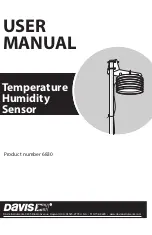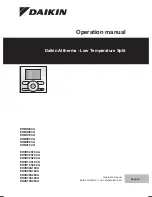
FloBoss 107 Instruction Manual
5-4
Communications
Revised June-2017
EIA-232 (RS-232)
Located on the CPU and labeled
COM2
(see
Figure 5-3
), the COM2
port provides the default for serial communications. It is the standard
for single-ended data transmission over distances of up to 15 m (50
ft). EIA-232 (RS-232) provides point-to-point asynchronous serial
communication. EIA-232 (RS-232) communications commonly
provide the physical interface for connecting serial devices, such as
gas chromatographs and radios.
Default EIA-232 (RS-232) values: 19,200 baud rate, 8 data bits, no
parity, and 1 stop bit.
Note:
When you install a communication module in slot 2, the
firmware disables the COM2 port on the CPU and redirects it
to the type of module installed in slot 2. Configure COM2
based on the type of communication module installed in slot 2.
Optional communication modules (COM3)
Optional communication modules that use the COM3 port include the
232 (EIA-232 [RS-232]) and 485 (EIA-485 [RS-485]) modules (see
Figures 5-1
and
5-2
), the Enhanced Communication module (see
Figure 5-5
), and the Dial-Up Modem module (see
Figure 5-14
).
Note:
COM3 activates only when you install a communication
module in slot 1.
Use ROCLINK 800 to configure the modules.
Each communication module uses a separate, single-ended channel from
the other modules. The field interface protects the electronics in the
module.
LEDs display the RX (receive) and TX (transmit) signals for EIA-232
(RS-232) communications.
LEDs display the A (transmit/) and B (transmit/receive
) signals
for EIA-485 (RS-485) communications.
Communication
Protocols
The FB107 has the capability to communicate with other devices using
ROC or Modbus protocols. The firmware can automatically detect the
two protocols (ROC or Modbus) at baud rates of up to 115.2 Kbps.
ROC protocol supports serial communications to local or remote devices,
such as a host computer.
An FB107 can act as a Modbus host or slave device using Remote
Terminal Unit (RTU) or American Standard Code for Information
Interchange (ASCII) modes. This allows you to easily integrate the
FB107 into other systems. Extensions to the Modbus protocol allow the
retrieval of history, event, and alarm data in Electronic Flow Metering
(EFM) Measurement applications.
Note:
The LOI port only supports ROC or Modbus
slave
protocols.
















































